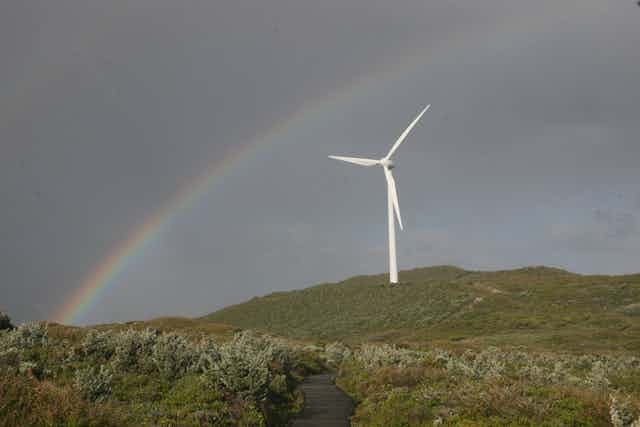Kevin Rudd’s move to cut the carbon price and move to an emissions trading scheme is meant to ease the cost of living. Meanwhile the Coalition would like us to drop carbon pricing and trading altogether. But new modelling suggests cutting the carbon price might actually increase electricity costs for households.
The connection between the price on carbon and our hip pockets has been endlessly discussed. A new report from Reputex released this week suggests scrapping the carbon price may increase the price of electricity.
How does this work?
Carbon pricing and renewable energy
Cutting carbon pricing could raise electricity prices through its effect on renewable energy.
The main policy mechanism encouraging the development of renewables is the renewable energy target, which aims for 20% of electricity to be generated by renewable sources, such as wind and solar, by 2020.
The Reputex report says that if the carbon price is removed, the renewable energy target on its own won’t provide enough incentive for companies to invest in wind farms. The same conclusion was reached in a report to the Climate Change Authority last year by consultants Sinclair Knight Merz (SKM).
The reason is that the combination of the carbon price and renewable energy target provides the investment signal to encourage development of wind farms.
From renewables to electricity prices
Consumers often associate renewable energy with higher bills, so many are happy to rely on coal-powered energy if it means saving dollars.
Somewhat counter-intuitively however, we might get higher electricity prices if we don’t meet the renewable energy target. The report from Reputex and a recent report from Bloomberg New Energy Finance say that if the renewable energy target is met the result will be a reduction in the cost to consumers.
This is thanks to reduced wholesale electricity prices. Renewable generators have zero fuel cost (sun and wind are free). This means they can always sell all the electricity they produce to the market, undercutting the price of conventional generators, through a process known as the merit order effect. The result is a downward pressure on wholesale electricity prices.
We can see results like this in Germany and South Australia. And the predictions are consistent with another SKM report which shows the expected reduction in wholesale electricity price outweighs the cost of the renewable energy target. SKM estimated a saving of A$35 each year for a typical Victorian household as a result of the renewable energy target.
The costs of new generation by wind, coal and gas are similar (see also here). Any type of new generation (whether coal, gas or wind) is more expensive than electricity from generators that are decades old, because their capital cost has already been written off. The renewable energy target enables wind and solar generators to compete with these lower prices that are based on existing, depreciated fossil-fuel generators.
The future energy mix
Electricity accounts for about one-third of Australia’s greenhouse gas emissions. To reduce our emissions significantly, we will need to move to low-carbon energy sources.
South Australia has been leading the way in renewable generation in Australia. They now have 29% of their electricity coming from wind, and as a result of this and efficiency measures emissions from electricity in SA have dropped by one-third since 2005. The South Australian experience shows that we can reduce emissions by integrating large amounts of renewables into the electricity grid.
The reduction in prices for renewable energy over recent years, together with the risks associated in investing in high-carbon generation means that the electricity mix in the future will be very different to the mix we have today.
The Australian Electricity Market Operator has shown in a draft report that it would be technically feasible to produce 100% of our electricity from renewables. Meanwhile, the 2012 Australian Technology Energy Assessment from the Bureau of Resources and Energy Economics shows that wind and solar are expected to be the cheapest long term energy options, with wind the cheapest of all technologies (renewable or not) by 2020.
Making large changes in the way we produce power will take decades. To do so, we have to get the policy settings right. Both sides of politics have indicated support for the renewable energy target, but they have also taken steps to reduce the effect of the carbon price.
According to an online survey conducted by Essential Research, 76% of respondents supported building more wind farms to produce renewable energy. But this widespread support on its own will not be enough, unless the policies are set at a level so that renewable generation continues to be built.

